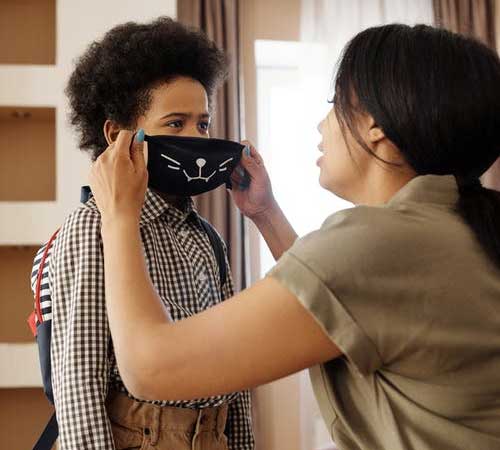

Additionally, it helps to provide them the best chance to successfully learn to read and fall in love with books and the habit of reading.
Here’s how to go about it.
1. Teach Your Child The Alphabet
To begin the process of reading, the child will need a solid foundation in the understanding of the alphabets.
When teaching your child, make sure that in addition to singing the alphabet, he/she develops an understanding of letter shapes and sounds.
Consider getting an alphabet children’s book to aid with this mission.
You can also make it fun by playing games. E.g., you could get some alphabet letters for the fridge, or cut out a bunch of letter shapes and decorate them with objects that begin with each letter.
2. Say The Word While Emphasising Its Sounds
First, you should pronounce the word normally. For example, when say the word, “rope.”
You should stretch out the word to emphasize each sound (or phoneme) in the word. So, you might say, “Rooope. Rooo-oh-puh.”
Ask your child to repeat the word after you. Have him/her say it the same way that you did.
3. Read To Your Child
As earlier established, it is never too early to start reading to a child.
Catch them young, and make reading part of the everyday routine.
According to studies, reading to infants has even been shown to lead to early brain development and improves language, literacy, and social skills.
For a more thorough job, you can read the same stories several times.
This way, your child will be able to correctly read more words each time through.
By going over the same words again and again, they will eventually be able to read the story more fluently.
4. Use A Lively Tone
Reading to your child in an engaging tone will help to keep the child interested in the book.
Even if the child is too young to understand the story, your voice can express happiness, sadness, anger, or some other emotions that will give the child some context to go with the pictures/letters.
5. Ask Your Child To Read To You
As your child reads, they will pause on words they are not familiar with, and so, find difficult to pronounce.
When this happens, immediately provide the word for him and let him move on.
Have you read: How To Know Your Child’s Learning Style
Underline with a pencil the words he initially cannot read and when they’re done, go back and review any incorrect words and help read the words correctly.
Maintain this habit of helping your child sound out the challenging words.
Once your child can identify the first sound of one-syllable words, teach him to add the ending.
You can use a picture to break up the letters and make each individual sound, then ask your child what the word is.
This will help him to understand how each of the sounds created by letters will work together to form words. Have him/her practice sounding out the words in the same way.
Place one-syllable words together in a two- or three-word sentence and make your learner practice reading the sentence by sounding out each word.
Once he gets a hang of sounding out one-syllable words, add another syllable. Keep challenging them that way to sound out longer words.
6. Have Them Include Writing
Reading is a necessary precursor to writing, but as your child develops reading skills have them incorporate writing into it.
Children learn to read faster and easier if they are taught to write at the same time.
The motor memory of the letters, listening to their sounds, and seeing them in writing will reinforce new learning of correcting sounding and spelling them put.
7. Set A Positive Example By Reading Books
Show your child that reading is interesting, worthwhile, and essential by having them witness you read yourself.
Spend a minimum of ten minutes a day reading when your child is around so that they see you indulging in the activity on your own.
Even if you’re not an avid reader, find something to read – a magazine, novel, the newspaper, a cookbook, all join.
Soon enough, they’ll become interested in reading on their own, simply as a result of seeing you doing it too.
If possible, include your child in your reading time. If you’re reading something child-friendly, tell them about what you’re reading, and let them indulge.
If a child notices that you are enjoying a book, he/she will be more likely to develop an interest in reading as well.
Find other resources on parenting here.



